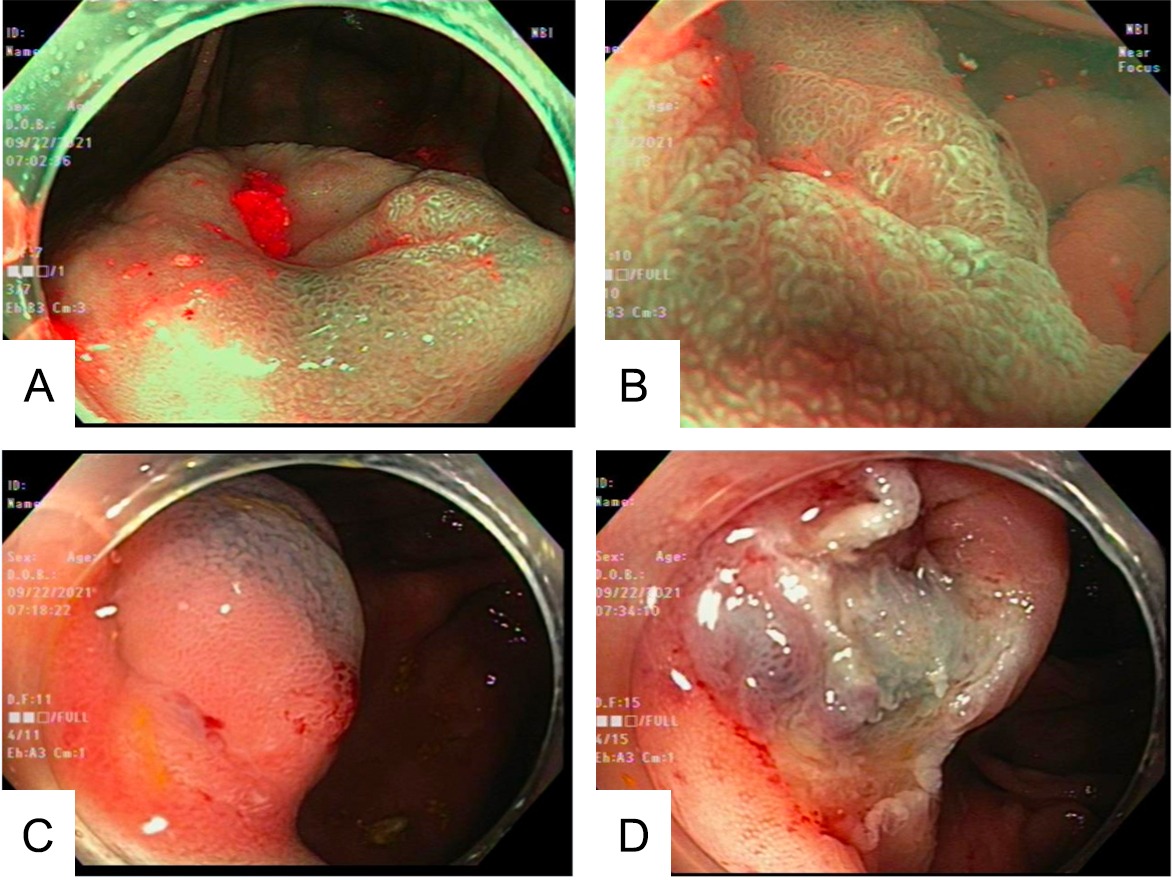Back
Poster Session D - Tuesday Morning
D0289 - Successful Surgery-Sparing Endoscopic Removal of an ICV Polyp With the Use of Dilumen Device
Tuesday, October 25, 2022
10:00 AM – 12:00 PM ET
Location: Crown Ballroom

Arsh Momin, MD
Penn State Health Milton S. Hershey Medical Center
Hummelstown, PA
Presenting Author(s)
Arsh Momin, MD1, Haoran Peng, MD2, Viveksandeep Chandrasekar, MBBS3, John Erikson L. Yap, MD3
1Penn State Health Milton S. Hershey Medical Center, Hummelstown, PA; 2Augusta University Medical College of Georgia, Augusta, GA; 3Augusta University Medical College of Georiga, Augusta, GA
Introduction: Ileocecal valve (ICV) polyps are technically challenging to remove endoscopically and reoccur with a rate of 18.6%. We report on a case of an ileocecal valve polyp that underwent multiple failed attempts of endoscopic removal. It was successfully removed using the Dilumen device.
Case Description/Methods: A 72-year-old Caucasian male with known past medical history of CAD, paroxysmal atrial fibrillation not on anticoagulation, referred for completion polypectomy of a 10mm flat ileocecal valve (ICV) polyp after 2 failed colonoscopy removal attempts seen by referring gastroenterologist due to colon tortuosity and polyp location. Pathology of the partially removed polyp was adenoma with high grade dysplasia (HGD). Vitals, physical exam and laboratory data were unremarkable. Patient refused surgical management and prefers endoscopic treatment, if possible. He agreed to a 3rd colonoscopy and, given history of failed attempts, we utilized the Dilumen device to assist with the endoscopic procedure. The device provided stability in positioning the colonoscope that allowed complete removal of the residual ICV polyp via en bloc endoscopic mucosal resection (EMR). The edges were treated with snare tip coagulation. Pathology came back as adenoma with HGD with clear margins. Patient is doing well post-procedure with no issues.
Discussion: ICV polyps usually pose a great challenge for EMR due to its location and tendency to extend into the terminal ileum and around the valve orifice. This makes it technically difficult to completely resect the lesion and poses a high risk for recurrence. In fact, a study showed that only 76.3 % of the large polyp (size >20mm), can be resected endoscopically in the ICV versus 91.3% resection rate in non-ICV area. Frequently, surgical referral would be the alternative option but more complications can occur after invasive surgery. In order to avoid surgery, a few novel techniques have been developed. Dilumen is an endoscopic accessory sheath consisting of two balloons that can be manually inflated and deflated as needed. The balloons can facilitate endoscope navigation by shortening and straightening the colon similar to double balloon assisted enteroscopy. This improves access for the endoscope to maneuver in between and remove the polyp. In our patient, it helped greatly in removing the difficult ICV polyp and the patient was able to avoid undergoing surgery.

Disclosures:
Arsh Momin, MD1, Haoran Peng, MD2, Viveksandeep Chandrasekar, MBBS3, John Erikson L. Yap, MD3. D0289 - Successful Surgery-Sparing Endoscopic Removal of an ICV Polyp With the Use of Dilumen Device, ACG 2022 Annual Scientific Meeting Abstracts. Charlotte, NC: American College of Gastroenterology.
1Penn State Health Milton S. Hershey Medical Center, Hummelstown, PA; 2Augusta University Medical College of Georgia, Augusta, GA; 3Augusta University Medical College of Georiga, Augusta, GA
Introduction: Ileocecal valve (ICV) polyps are technically challenging to remove endoscopically and reoccur with a rate of 18.6%. We report on a case of an ileocecal valve polyp that underwent multiple failed attempts of endoscopic removal. It was successfully removed using the Dilumen device.
Case Description/Methods: A 72-year-old Caucasian male with known past medical history of CAD, paroxysmal atrial fibrillation not on anticoagulation, referred for completion polypectomy of a 10mm flat ileocecal valve (ICV) polyp after 2 failed colonoscopy removal attempts seen by referring gastroenterologist due to colon tortuosity and polyp location. Pathology of the partially removed polyp was adenoma with high grade dysplasia (HGD). Vitals, physical exam and laboratory data were unremarkable. Patient refused surgical management and prefers endoscopic treatment, if possible. He agreed to a 3rd colonoscopy and, given history of failed attempts, we utilized the Dilumen device to assist with the endoscopic procedure. The device provided stability in positioning the colonoscope that allowed complete removal of the residual ICV polyp via en bloc endoscopic mucosal resection (EMR). The edges were treated with snare tip coagulation. Pathology came back as adenoma with HGD with clear margins. Patient is doing well post-procedure with no issues.
Discussion: ICV polyps usually pose a great challenge for EMR due to its location and tendency to extend into the terminal ileum and around the valve orifice. This makes it technically difficult to completely resect the lesion and poses a high risk for recurrence. In fact, a study showed that only 76.3 % of the large polyp (size >20mm), can be resected endoscopically in the ICV versus 91.3% resection rate in non-ICV area. Frequently, surgical referral would be the alternative option but more complications can occur after invasive surgery. In order to avoid surgery, a few novel techniques have been developed. Dilumen is an endoscopic accessory sheath consisting of two balloons that can be manually inflated and deflated as needed. The balloons can facilitate endoscope navigation by shortening and straightening the colon similar to double balloon assisted enteroscopy. This improves access for the endoscope to maneuver in between and remove the polyp. In our patient, it helped greatly in removing the difficult ICV polyp and the patient was able to avoid undergoing surgery.

Figure: A - Narrow Band Imaging (NBI) of the ICV polyp B - Near focus evaluation of the ICV polyp C - Submucosal lifting of the ICV polyp D - Post EMR of the ICV polyp
Disclosures:
Arsh Momin indicated no relevant financial relationships.
Haoran Peng indicated no relevant financial relationships.
Viveksandeep Chandrasekar indicated no relevant financial relationships.
John Erikson Yap indicated no relevant financial relationships.
Arsh Momin, MD1, Haoran Peng, MD2, Viveksandeep Chandrasekar, MBBS3, John Erikson L. Yap, MD3. D0289 - Successful Surgery-Sparing Endoscopic Removal of an ICV Polyp With the Use of Dilumen Device, ACG 2022 Annual Scientific Meeting Abstracts. Charlotte, NC: American College of Gastroenterology.
